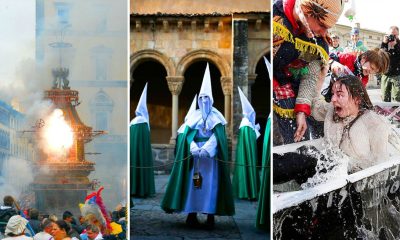General News
Budapest celebrates Samhain, the Celtic festival that gave rise to Halloween

Before the Roman conquest, the area around present-day Budapest was inhabited by a Celtic tribe, the Eravisci, who celebrated Samhain, the beginning of the dark season.
A special Halloween celebration awaited antique lovers at the Roman Archaeological Park and Museum in Budapest. Although many people associate Halloween with the United States, the festival has Celtic roots.
Before the Roman conquest, the area around present-day Budapest was inhabited by a Celtic tribe, the Eravisci, who celebrated Samhain, the beginning of the dark season.
“It was essentially the end of summer, when the harvest was over, that they retired for the winter,” says Zsanett Abonyi, a cultural organiser at the Aquincum Museum. “And they closed the season with a big celebration. And there’s a lot of information from which we can reconstruct what the traditions associated with the Samhain event were, which then evolved or transformed into the Halloween we know today.”
The ancient Celtic festival involved face painting and dressing up, just as Halloween does today.
Pumpkin carving, which also has ancient roots, was also on the programme: the Celts used to carve lanterns from turnips during Samhain.
The various activities offered a detailed insight into traditions dating back 2,000 years, and the musical highlight was a performance by several traditional groups.
Source
No copyright infringement intended. All rights and credits reserved to respective owner(s).
























